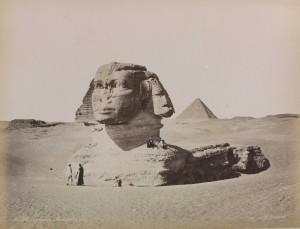By Bob Hicks
How quickly the worm turns.
Less than a month ago, in a post detailing the ouster (or resignation: stories varied) of the legendary archaeologist Zahi Hawass as Egypt’s powerful chief of antiquities, we made this observation: “(T)he revolution is real, and Hawass, barring yet another turnabout, won’t be making any of its crucial decisions.”
 Well, the turnabout’s happened. As Kate Taylor reports here in the New York Times, Hawass is back in the saddle, reappointed by the new prime minister, Essam A. Sharaf. Hawass has made his share of enemies over the years, and was held in suspicion because of his close ties to the Mubarak regime, but was also known as a fierce and effective defender of and spokesman for Egypt’s cultural treasures. Plus, he’s a wily fox.
Well, the turnabout’s happened. As Kate Taylor reports here in the New York Times, Hawass is back in the saddle, reappointed by the new prime minister, Essam A. Sharaf. Hawass has made his share of enemies over the years, and was held in suspicion because of his close ties to the Mubarak regime, but was also known as a fierce and effective defender of and spokesman for Egypt’s cultural treasures. Plus, he’s a wily fox.
Separately, antiquities inspector Sarah Marei, one of the people trying to deal with safeguarding the nation’s collections during and after the revolution, wrote this piece for The Art Newspaper decrying the looting of museums and archaeological sites. “(T)he police presence vanished in the revolution and has yet to return to the sites,” wrote Marei, who’s been working in Giza. “The individual initiatives on the part of site inspectors and the townspeople from the remote areas is often the only current protection afforded to some of the world’s most unique and magnificent monuments.” Marei kicked up a bit of controversy by suggesting that collectors and institutions outside of Egypt might be providing a ready market for the looters.
*
Good Korean dance: I have this review in this morning’s Oregonian of the South Korean contemporary dance troupe Laboratory Dance Project, which is finishing a three-night run on White Bird‘s Uncaged series. It’s a good company with excellent dancers and fresh ideas, and the Portland run is its West Coast premiere. Final show tonight (Saturday), 8 p.m., Lincoln Performance Hall.
*
Photo: The Great Sphinx, still partly buried in sand, ca. 1880. Wikimedia Commons.